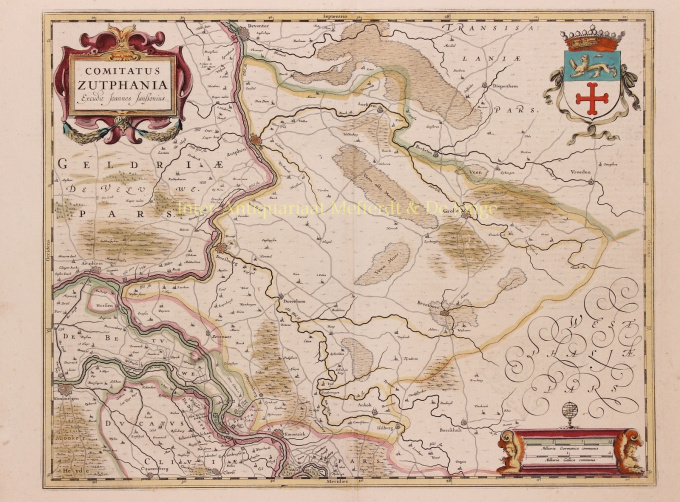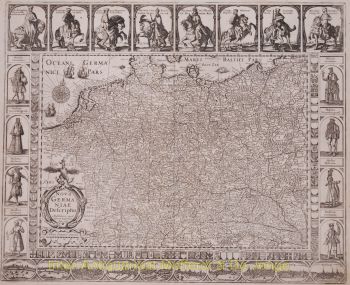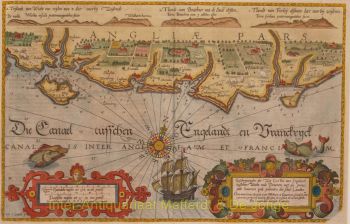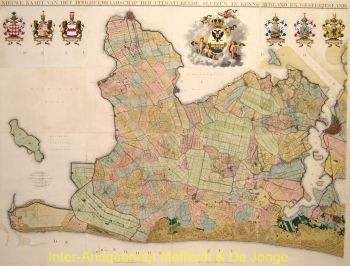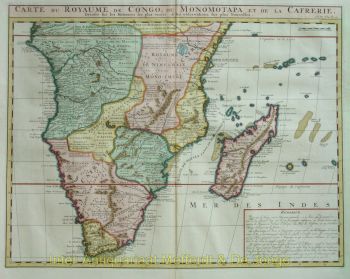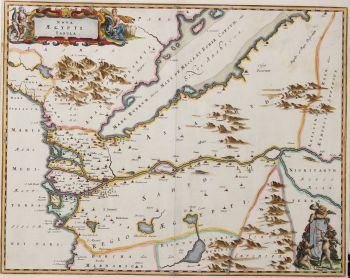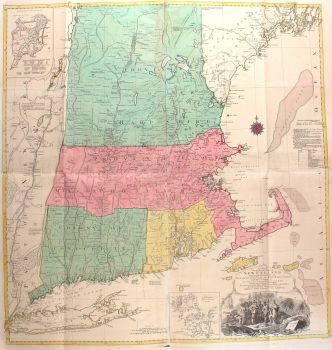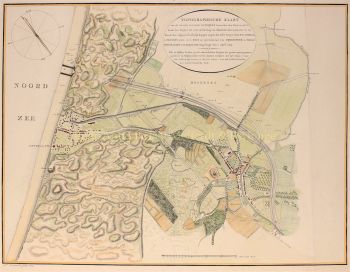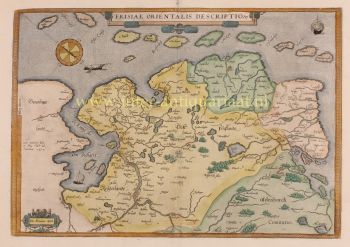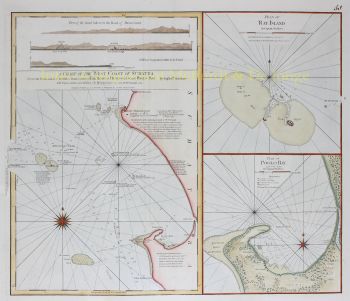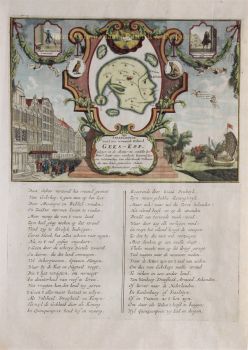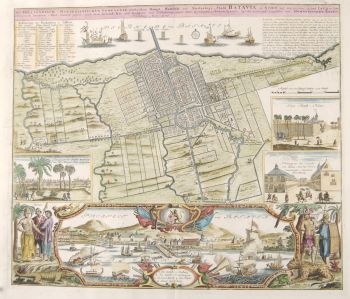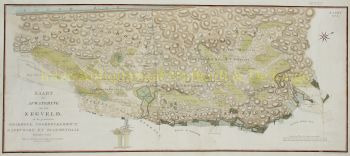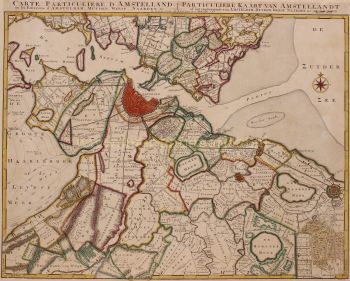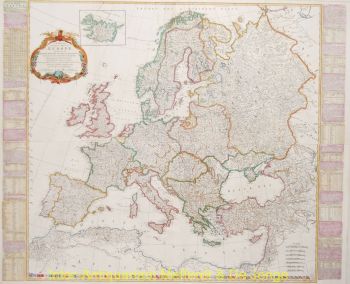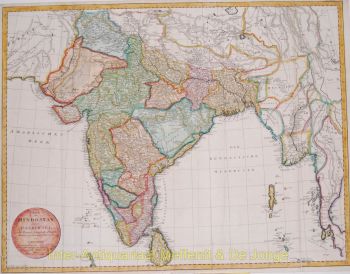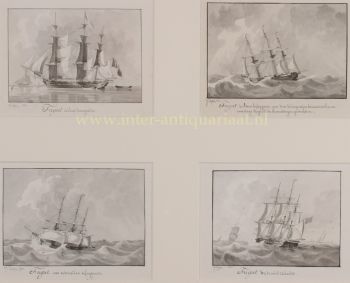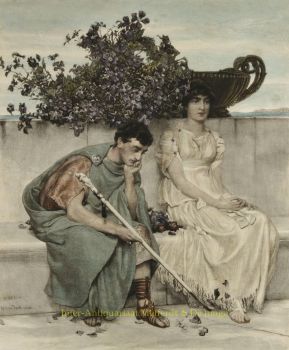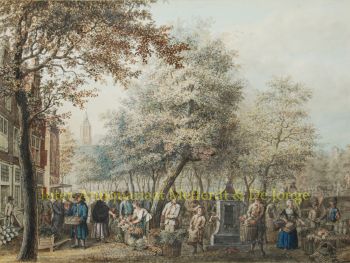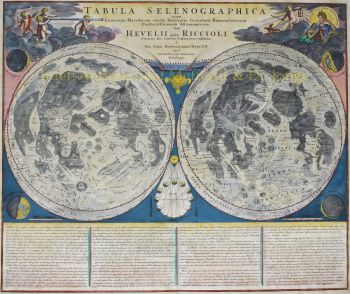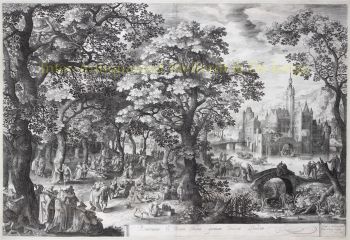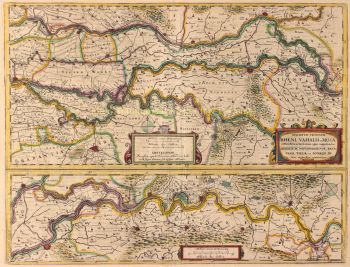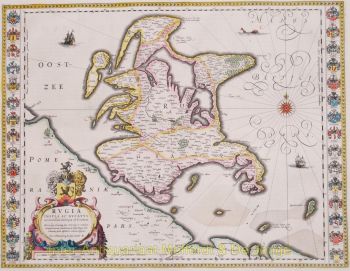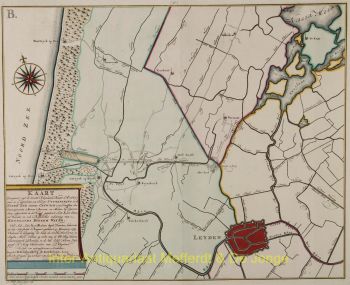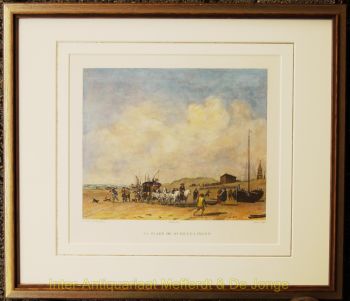Achterhoek (Condado de Zutphen) 1641
Johannes Janssonius
€ 295
Inter-Antiquariaat Mefferdt & De Jonge
- Sobre arte
THE QUARTER OF ZUTPHEN "Comitatus Zutphania", copper engraving published by Johannes Janssonius in 1641 as part of his "Nouveau Theatre du Monde ou Nouvel Atlas". Coloured by hand at the time. Measures 46.5 x 56.4 cm. In the years 1557 to 1559 the area was mapped by Christiaan sGrooten. sGrooten's map of Gelderland was also the model for Janssonius' map of the County of Zutphen. We see the Kleef area near Huissen and Zevenaar clearly delimited. Isselburg falls within the border of the County. There are no siege works drawn around Groenlo. The area of the manor of Borculo fell under the Earldom after 1615, but is shown here as part of the Bishopric of Münster. For the city of Zutphen, the Eighty Years' War brought difficult times. In 1572, Zutphen was captured by William of Orange's brother-in-law. The Spaniards were driven out, but half a year later they took the city back and executed hundreds of inhabitants. In 1577, the Spaniards left the city, but the Catholic city council remained in place. In the summer of 1579, the Protestants seized power and deposed the Roman Catholic administrators. In 1583, Zutphen was again in the hands of the Spaniards but after that, the city was besieged two more times by the Staatsen. In 1591, Prince Maurits conquered Zutphen until, in 1629, a German-Spanish army once again invaded the Veluwe and went on a killing spree. Top right, the city arms of Zutphen are depicted, with the Count's Crown on top. Bottom right the scale of the map is flanked by winged angels with claws, on top is an armillary as a symbol of wisdom and knowledge (of the mapmaker). Price: Euro 295,-
- Sobre artista
Janssonius nasceu em Arnhem como filho de Jan Jansz, um impressor e editor de lá. Ainda jovem mudou-se para Amsterdã, então centro da impressão e do comércio de cartões. Em 1612 ele se casou com Elisabeth Hondius, filha de Jodocus Hondius. Elisabeth morreu em 1627 e Janssonius casou-se novamente em 1629 com Elisabeth Carlier. Ele foi trabalhar para o sogro e continuou o negócio editorial junto com Henricus Hondius (filho de) após sua morte. Este foi desenvolvido em um dos maiores de seu tempo. Havia filiais em Berlim, Frankfurt, Genebra, Lyon e Estocolmo, entre outras.
Sob a liderança de Janssonius, o Mercator-Hondius Atlas foi expandido e publicado como Atlas Novus. Esta edição inicialmente de um volume logo se tornou um atlas de vários volumes, complementado a pedido com cartas náuticas e/ou cartas celestes. Houve publicações em holandês, francês, espanhol e latim. Assim como seus contemporâneos, Janssonius também fez uso de placas de cobre existentes, incluindo as dos livros da cidade de Braun & Hogenberg e a Description de touts les Pays Bas (Descrição de todos os Países Baixos) de Lodovico Guicciardini - (edição Cornelis Claesz.) de 1609 Embora Janssonius tenha sido frequentemente acusado de copiar o trabalho de Willem Blaeu, pode-se notar que os mapas de Janssonius também apareceram no mercado anteriormente.
Após a morte de Janssonius, a empresa foi continuada por seu genro, Johannes (Jan) van Waesbergen, que era casado com sua filha Elisabeth Janssonius (1615-1681). Muitas placas de cobre dos livros da cidade foram usadas (às vezes ligeiramente modificadas) por Frederik de Wit. O prédio na Praça Dam foi alugado para Gerard Valck; Ele também comprou várias chapas de impressão em 1694.
Você está interessado em comprar esta obra de arte?
Artwork details
Related artworks
- 1 - 4 / 4
- 1 - 4 / 24
- 1 - 4 / 12

